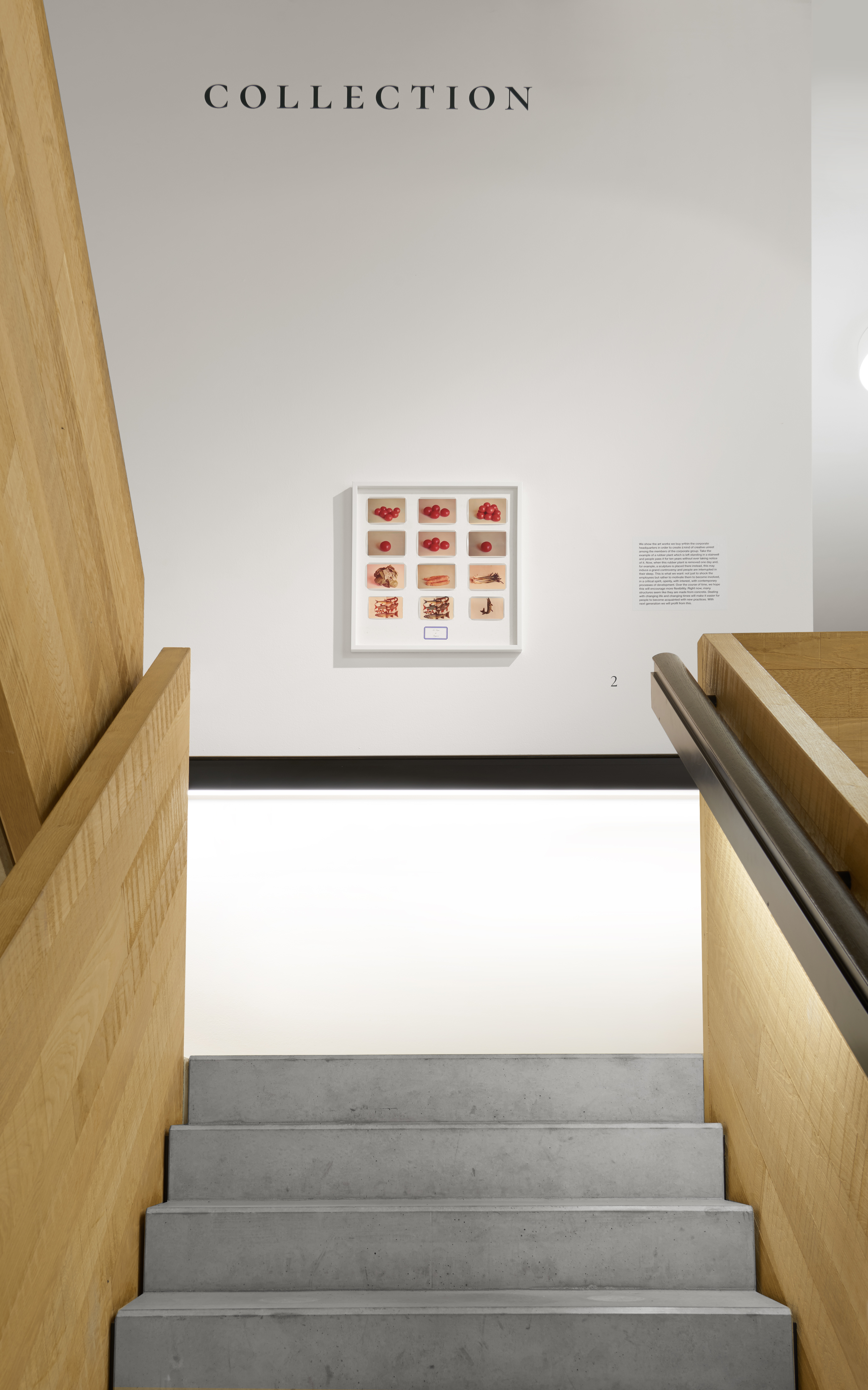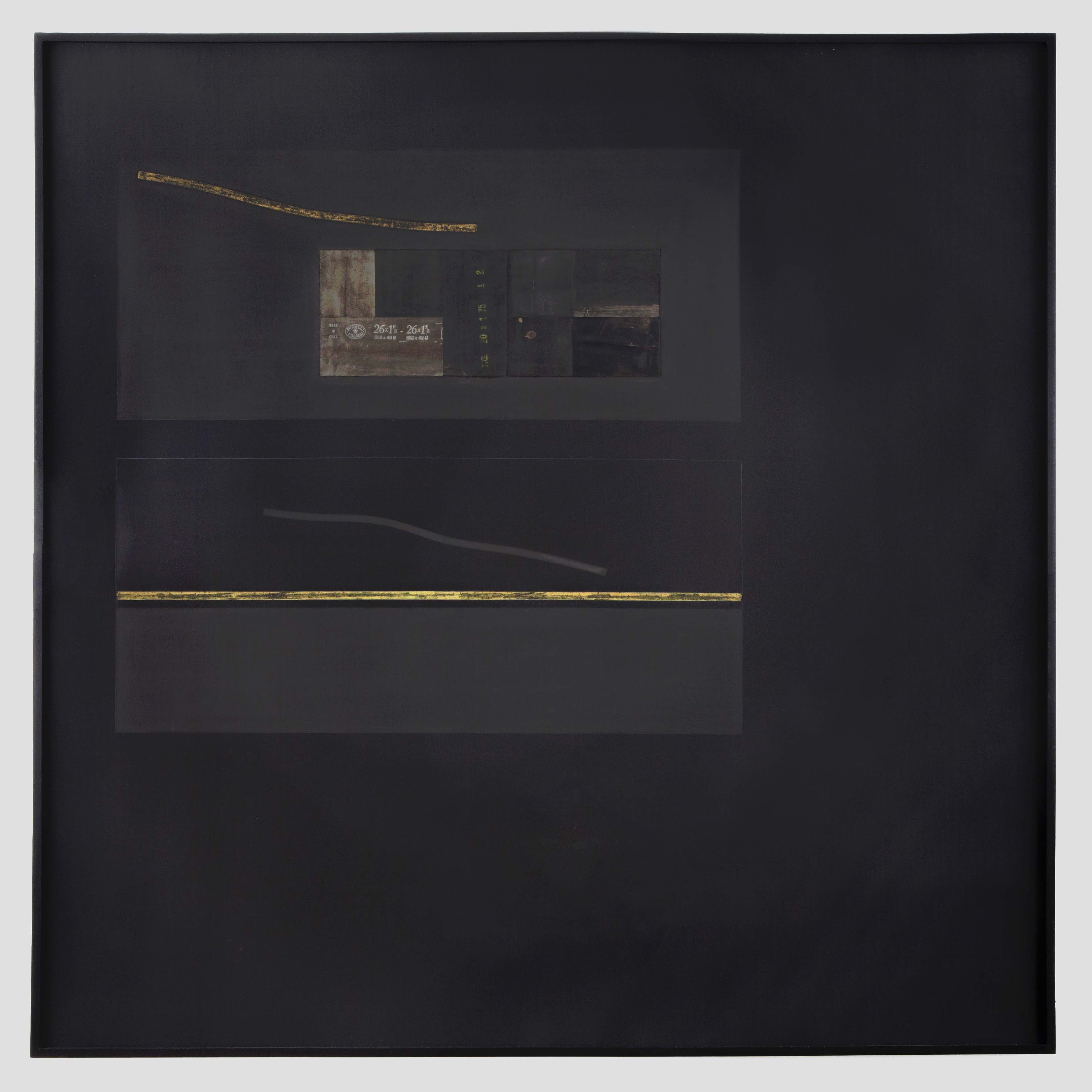PRATCHAYA PHINTHONG
Untitled, 2010
Pratchaya Phinthong is a Thai artist working with the processes typical of conceptual art, investigating socio-economic dynamics within communities and production chains. In this piece, the mark of the company producing the Renaissance canvas has been hand-painted, and the canvas has then been covered in a nylon film, to camouflage the craftsmanship in the production of an image that is otherwise industrially printed. With this gesture, the artist questions the concepts of seriality and uniqueness, of original and copy, of project and residual object. The work is part of a group of canvases of different sizes and dates, in which the serial reproduction of the same pattern is actually realised through the uniqueness of the pictorial gesture.
MARCEL BROODTHAERS
La Soupe de Daguerre, 1975
Ed. of 60
The work consists of a series of small photographs depicting ingredients for the preparation of a soup named after the inventor of the first photographs called daguerreotypes: Monsieur Daguerre. As in many of his works, here too Broodthaers combines iconographic elements with linguistic definitions, ironically disrupting their logical correspondence. The soup in question is the result of combining a series of elements reproduced in photographs, just as photography is the result of combining a series of elements and chemical processes. The taxonomic presentation of the ingredients is functional to the supposed scientific nature of the game of representation, and of the methods of photographic reproduction.
DENNIS OPPENHEIM
Reading Position for Second Degree Burn, 1970
Ed. of 30
In this work, the artist depicts the effect of prolonged exposure to the sun’s rays on his own body through a photographic sequence. He is partly covered by an open book, so as to leave the tan line visible on the shaded skin. The book in question is about military tactics and the work was created during the years of the Vietnam conflict. The artist thus refers to the damage that war causes on human bodies, as the infamous photograph Napalm girl from 1972 shows in an unequivocal and frightening way, becoming an iconic image of this sad chapter in history. A performative approach is combined with a dry and documentary formalisation, and a sterile language, in which every piece of information listed in the caption is reported as a scientific fact.
WALLACE BERMAN
Untitled (TV), 1964
Wallace Berman, actively involved in the Californian Beat Generation, began producing his collages with a Kodak Verifax machine in the early 1960s. These works were obtained with a reproduction technique that predates photocopies and is characterised by sepia tones, on which the artist experimented with tones and textures over the years. The iconic image of his production is a small transistor radio into which he inserted elements from books, newspapers and magazines. This work is one of only two made with the reproduction of a television set – instead of the radio – inside which is inserted the image of a female nude, on which is the magic square of the Sator, an ancient Latin palindrome inscription, the meaning of which remains uncertain to this day.




